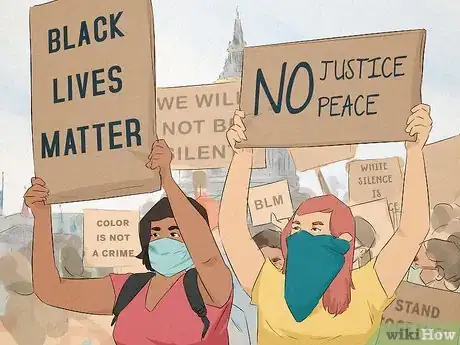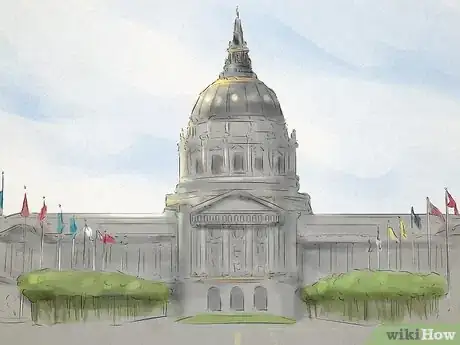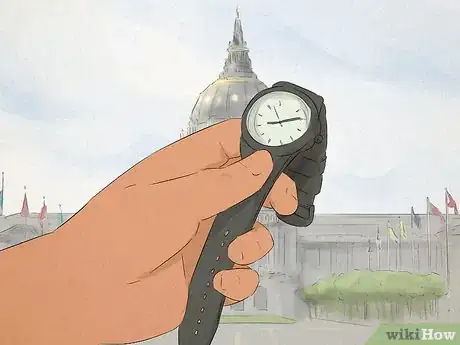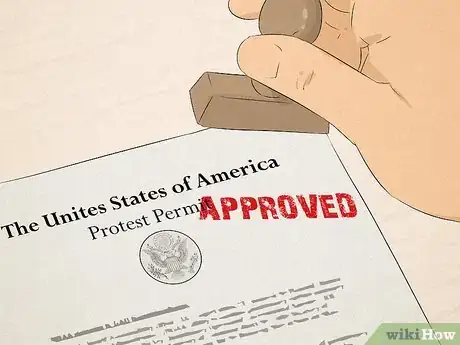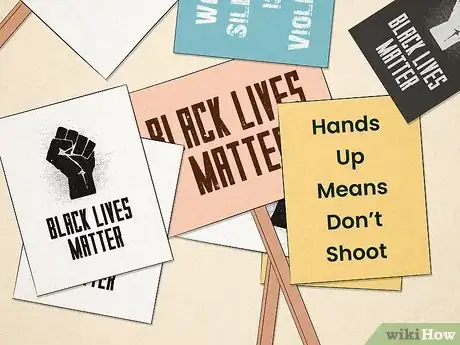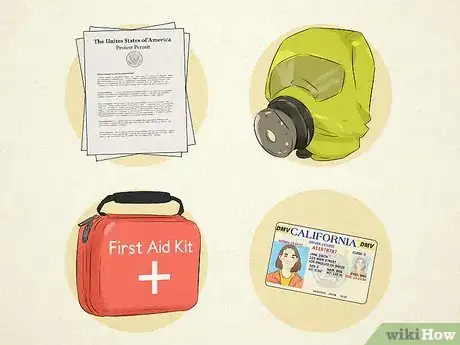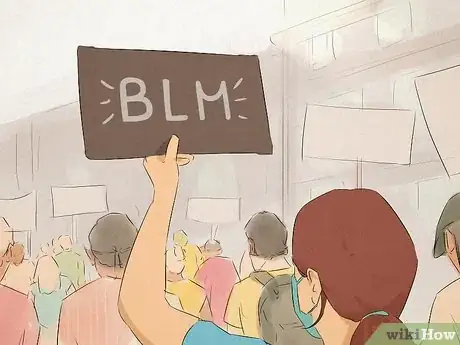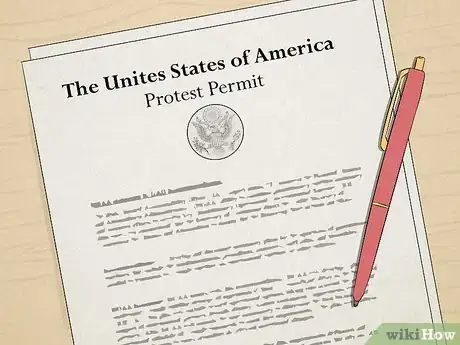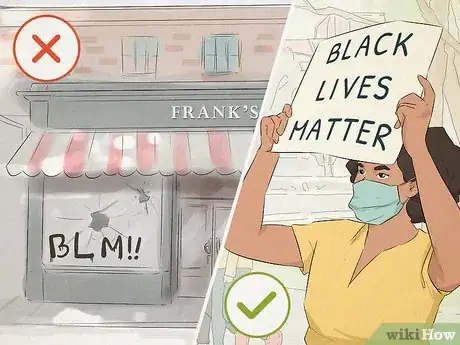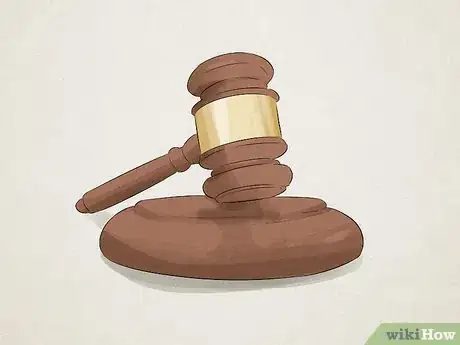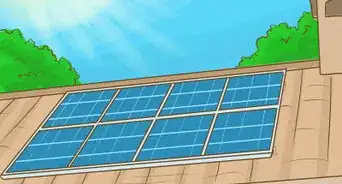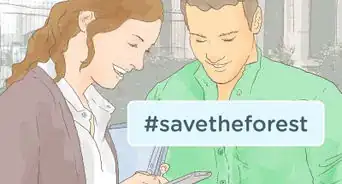This article was co-authored by Asa Don Brown, PhD, DNCCM, FAAETS. Dr. Asa Don Brown is a Clinical Psychologist with over 25 years of experience. He specializes in working with families, children, and couples, treating a variety of psychological disorders, trauma, and abuse. Dr. Brown has specialized in negotiation and profiling. He is also a prolific author having published three books and numerous articles in magazines, journals, and popular publications. Dr. Brown earned a BS in Theology and Religion with a minor in Marketing and an MS in Counseling with a specialization in Marriage and Family from The University of Great Falls. Furthermore, he received a PhD in Psychology with a specialization in Clinical Psychology from Capella University. He is also a candidate for a Masters of Liberal Arts through Harvard University. Dr. Brown is a Fellow of the American Academy of Experts in Traumatic Stress and a Diplomate for the National Center for Crisis Management and continues to serve a number of psychological and scientific boards.
There are 9 references cited in this article, which can be found at the bottom of the page.
wikiHow marks an article as reader-approved once it receives enough positive feedback. This article received 20 testimonials and 100% of readers who voted found it helpful, earning it our reader-approved status.
This article has been viewed 287,611 times.
When you just can't stay silent on a particular issue, expressing your views through civil protest is a positive way to make a difference. Gathering with other people to collectively speak out against wrongdoing is a fundamental right and a powerful way to bring about change. Just be sure to organize and execute a safe and peaceful protest so no one gets hurt.
Steps
Organizing a Protest
-
1Set a goal. Protests can function as a way to spread awareness about an issue or put pressure on those in power to make a specific change. What do you hope to accomplish with your protest? Figure out who the audience of your protest will be and plan your strategy from there. You're more likely to get the outcome you want if you take time to set a goal for achieving it.[1]
- For example, let's say you want to stage a protest at a local factory farm as a way to spread awareness about how animals are treated there so people will stop buying their products. In this case, your audience is the public.
- You may have a more specific goal, like trying to prevent or change a discriminating law or policy. In this case, the aim of the protest might be to put pressure on the local government to address human rights and the needs of the community who feel discriminated against.
- In some cases, your goal might be quite large in scale, like if you're protesting a war or a governmental policy. In this case, the protest can be used as a tool to show political leaders that their constituents want a change in policy.
-
2Choose a public location. Find a location that is practical, symbolic, convenient, or all three. The location you choose should be the one that helps you reach your target audience so that the protest is as effective as possible. This could be the sidewalk in front of a business, a public street corner, the courthouse, the capitol building, or a park that has historically been used for protests in your city. Just remember that in order for the protest to be legal, the site you choose must be public.[2]Advertisement
-
3Pick a time to stage the protest. Protest at a time when you'll be able to gather the largest crowd and have the greatest impact on your audience. For example, if you're protesting a certain company's business practices, you'll want to stage the protest when the CEO is present, which will probably be during business hours. On the other hand, if the goal of your protest is to gather as many people as possible, you might want to protest on a weekend when more people will be available to come.[3]
-
4Get the necessary permits. Check with your city officials about whether you need to get a permit to protest in the location you choose. Each city has its own laws regarding how many people can protest and where they can gather. Do your homework and get the permits you need so that your protest won't get disbanded before it can gain any traction.[4]
- In some cases, the permit will set limits on how many people can gather, how much noise you can make, and where protesters can move about. If you disagree with the terms, you can contact an attorney to help you try to get them altered.
- Some cities don't issue protest permits. If you're expecting a large crowd to come to the protest, you should alert the police department anyway. If they know what to expect they can help with crowd control and there will be less chance of conflict occurring.
-
5Plan the sequence of events. What actions will best help you achieve your goal? It's important to have an agenda in mind for what will happen once everyone is gathered for the protest. Do some research on other effective protests and come up with a game plan that will help you target your goal. Here are a few ideas:[5]
- Have community leaders introduce the protest and make speeches on the issue at hand.
- Have an emcee who can lead protest chants and songs, and have bands play protest music.
- Plan a march from one location to another. This is a classic form of protesting that helps bring widespread attention to a cause.
- Implement performance art to help get your point across.[6]
- Screen an informative video or documentary on the subject you're protesting.
- Consider having a sit-in or sleep-in and occupy the space until your demands are met.
-
6Publicize the protest. Take this important step to make sure your protest gets as much attention as possible. The aim isn't just to encourage people to show up for the protest, but to capture that attention of the media, too. Pull out all the stops to spread the word starting a few weeks before the protest.[7]
- Post details about the protest on all your social media channels.
- Make flyers about the protest and put them up around town. Target college campuses and other places where people likely to be interested in protesting your issue congregate.
- Call local newspapers and radio stations and ask them to publish information about the protest and promote it on the air.
Getting Prepared to Protest
-
1Gather protest materials. Make posters, fliers, visual aids, or pamphlets to help spread your message and communicate your concerns to others. During the protest, you can give out information on what you're protesting to interested parties.
- You might want to put the name of the group with which you're affiliated on your protest materials. That way people who are new to the issue will know who to contact to find out more.
- Consider coming up with a catchy slogan for the materials—something people can easily memorize and communicate to others.
- Do not bring weapons to a protest (e.g. baseball bat, switchblade knives, batons, brass knuckles, stun guns, tactical pens or pepper spray).
-
2Wear protective clothing. You can keep yourself safe at a protest by dressing appropriately for the occasion. Dress for comfort—you might be standing or walking for several hours—and for safety, just in case you get jostled by the crowd or caught in the middle of an escalating conflict.[8]
- Wear comfortable tennis shoes.
- Wear several layers of thick clothing so you have extra padding on your body.
- If you plan to be on the front lines of a protest that could easily escalate into conflict, wear protective eyewear, since you might be sprayed with chemical agents such as pepper spray or tear gas.
-
3Bring emergency supplies. Bring a backpack with a few supplies you might need. Bottled water and food are good to have on hand if the protest is going to last a long time. In addition to these staples, pack the following in your backpack:[9]
- A copy of the protest permit
- Your identification card
- A first aid kit
- A gas mask, escape hood, or respirator, if you have one
-
4Understand that protests are unpredictable. No matter what you're protesting, there will be people who strongly disagree with your point of view. You may even encounter a separate group of protesters protesting the opposite side of the issue. At larger protests, the police may be present to control the crowd and make sure things don't get too out of hand. With all these different forces butting heads, be prepared for unpredictable things to happen.
- Do research on the group you're protesting with. If you weren't one of the organizers, you should know the history of the group before joining the protest. If the group has ever used illegal tactics or caused violence at a protest, it's best to avoid joining them.
- Most protests don't end in violence, but it does happen sometimes. When people feel passionate about an issue, their behavior can be unpredictable. Stay alert and aware of your surroundings when you protest.
- Be aware of your surroundings at all times and make sure people know where you are.
-
5Follow the guidelines in the protest permit. Make sure you know your rights as a protester and are familiar with how to deal with police in case you get stopped by an officer. If you stick to the terms outlined in the protest permit, you shouldn't encounter problems, but you never know what could happen.[10]
- Do your best to follow the instructions given by both the protest organizers and the police.
- If you believe your free speech rights are being threatened, speak to the protest organizer or call an attorney.
- If a police officer asks if they can search you, you have the right to decline until a warrant is presented.
Protesting Effectively and Safely
-
1Be respectful at all times. A protest can be a very effective way to exercise free speech, make your voice heard, and bring about change. However, being disrespectful to those against whom you're protesting can undermine your group's reputation and hurt the cause. Your arguments won't be taken as seriously if disrespectful actions are taken. Avoid the following (and encourage fellow protesters to do the same):
- Yelling insults at people who disagree with you
- Vandalizing public or private property
- Spitting or throwing water
- Resorting to violence of any kind
-
2Obey the law. Follow all the rules in your area to avoid legal repercussions. If you're considering civil disobedience as part of your protest strategy, think carefully before taking action. Civil disobedience can be a courageous, nonviolent strategy for driving a point home, but it comes with serious consequences, like getting arrested. It's important to know what you're getting into before you choose to break the law in the name of your cause.[11]
-
3Gauge the effectiveness of your protest. When all is said and done, reflect back on the protest and decide what worked and what didn't. Think about whether you reached your goal, and whether a different approach would be more effective the next time around. No matter what, be proud that you stayed true to your beliefs and exercised your right to be heard. Even if your protest didn't bring about the change you want to see, speaking up about your cause is a step in the right direction.[12]
- It's unlikely that a single protest is going to change everything. You'll probably need to have follow-up protests. Consider approaching the issue from other angles as well. You could start a letter-writing campaign, lead a boycott, write a blog to voice your opinions, and take other actions to spread awareness and accomplish your goals. Don't give up!
Community Q&A
-
QuestionCan I hold a protest at my school?
 Community AnswerYes, but there may be consequences for protesting during school hours or on school property without permission. You may want to hold a peaceful protest during lunch or recess that does not interfere with other students working. You could hold up signs or just hold a gathering. Don't be loud or rowdy.
Community AnswerYes, but there may be consequences for protesting during school hours or on school property without permission. You may want to hold a peaceful protest during lunch or recess that does not interfere with other students working. You could hold up signs or just hold a gathering. Don't be loud or rowdy. -
QuestionIsn't it helpful for a protest to turn violent because more people's attention will be drawn toward the issue being protested against?
 RubyTop AnswererNo, because if it turns violent you'll get the wrong type of attention and it will be far less likely that people will take your protest seriously.
RubyTop AnswererNo, because if it turns violent you'll get the wrong type of attention and it will be far less likely that people will take your protest seriously. -
QuestionWhat information needs to be shared to organize a protest?
 Community AnswerWhat you're protesting, when you're protesting, where you plan the protest to happen (this includes the route of the march, if any) and anything else that seems pertinent.
Community AnswerWhat you're protesting, when you're protesting, where you plan the protest to happen (this includes the route of the march, if any) and anything else that seems pertinent.
Warnings
- Some cities require a permit to protest. Call the local police department of the protest area to find out.⧼thumbs_response⧽
- Be prepared for counter-demonstrators and/or troublemakers—either of these groups can disrupt your peaceful protest, undermine your credibility, and distract attention away from your cause. Consider peace-keepers (as above) if you anticipate such interference.⧼thumbs_response⧽
- Be careful not to trespass on private property! You may have a legal right to access if the premises are open to the public, but don't assume this—find out from your city if it's permissible to stand on the sidewalks outside the site. If not, ask neighboring businesses or property owners for permission to use their property, or consider staging your protest at a public location such as a courthouse or town square.⧼thumbs_response⧽
Expert Interview

Thanks for reading our article! If you'd like to learn more about peaceful protest, check out our in-depth interview with Asa Don Brown, PhD, DNCCM, FAAETS.
References
- ↑ https://www.baypath.edu/news/bay-path-university-blogs/post/the-purpose-of-protest-and-what-makes-a-protest-effective/
- ↑ https://www.aclu.org/know-your-rights/protesters-rights
- ↑ https://campusfreespeechguide.pen.org/resource/how-to-plan-a-peaceful-protest/
- ↑ https://www.aclu.org/know-your-rights/protesters-rights
- ↑ https://ctb.ku.edu/en/table-of-contents/advocacy/direct-action/public-demonstrations/main
- ↑ http://www.media-studies.ca/articles/protest.htm
- ↑ https://www.huffpost.com/entry/the-art-of-protesting-how-to-organize-a-protest-that_b_588b2de1e4b0020b224b43a0
- ↑ https://deanofstudents.umich.edu/article/safety-tips-protesters
- ↑ https://deanofstudents.umich.edu/article/safety-tips-protesters
About This Article
To organize a protest, start by setting a clear goal so participants know what you’re protesting and to help prevent things from getting out of hand. Once you’ve set your goal, choose a location, time, and date for your protest. Contact your local council to see if you need a permit to protest in your chosen location. After you’ve got permission, publicize your protest using flyers, social media, and press releases. Before your protest, create some leaflets and placards to spread your message. You can also come up with catchy slogans and chants to unite protestors. For more tips, including how to behave appropriately and stay safe during a protest, read on!
